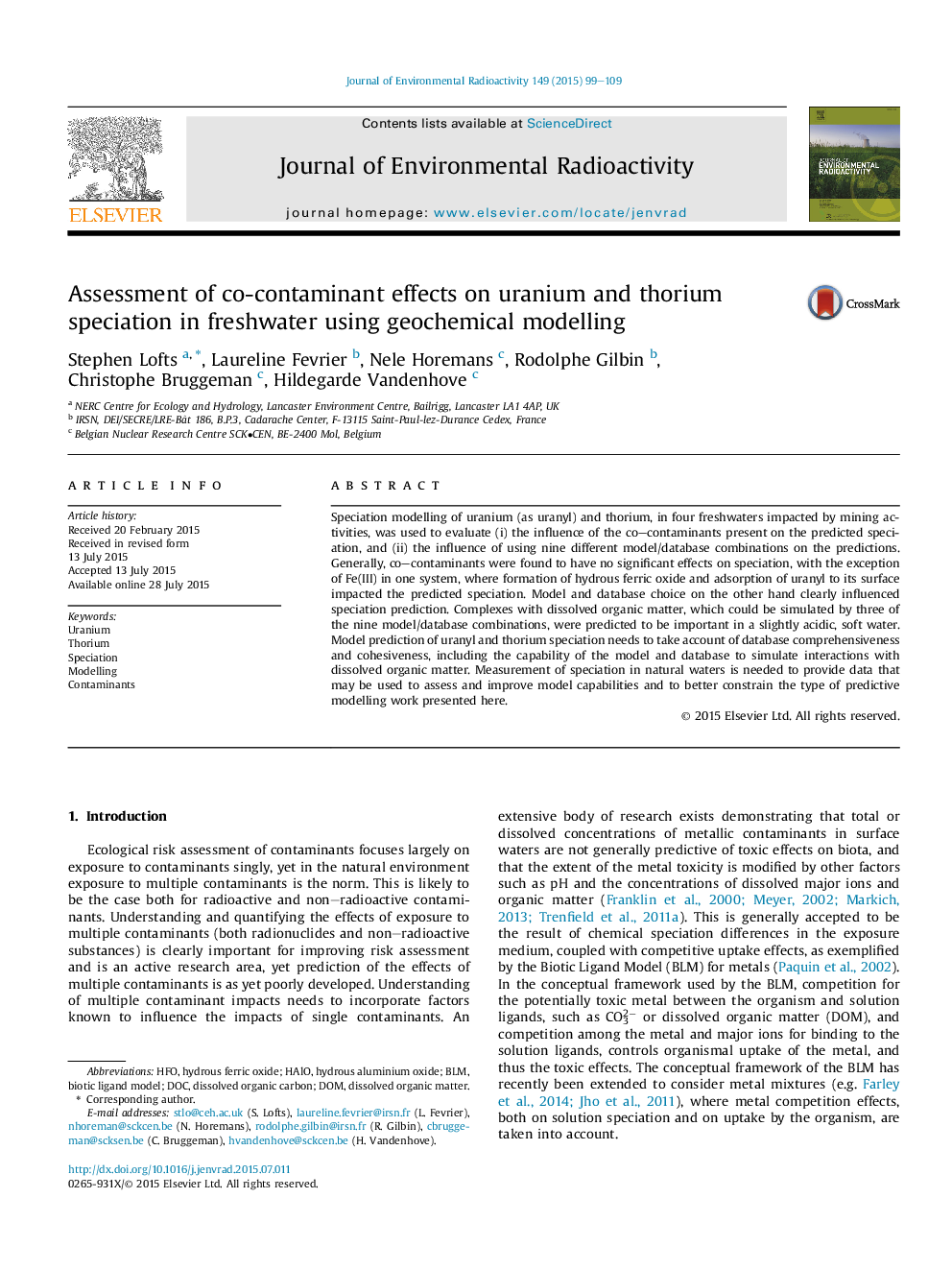| Article ID | Journal | Published Year | Pages | File Type |
|---|---|---|---|---|
| 1737829 | Journal of Environmental Radioactivity | 2015 | 11 Pages |
Abstract
Speciation modelling of uranium (as uranyl) and thorium, in four freshwaters impacted by mining activities, was used to evaluate (i) the influence of the co-contaminants present on the predicted speciation, and (ii) the influence of using nine different model/database combinations on the predictions. Generally, co-contaminants were found to have no significant effects on speciation, with the exception of Fe(III) in one system, where formation of hydrous ferric oxide and adsorption of uranyl to its surface impacted the predicted speciation. Model and database choice on the other hand clearly influenced speciation prediction. Complexes with dissolved organic matter, which could be simulated by three of the nine model/database combinations, were predicted to be important in a slightly acidic, soft water. Model prediction of uranyl and thorium speciation needs to take account of database comprehensiveness and cohesiveness, including the capability of the model and database to simulate interactions with dissolved organic matter. Measurement of speciation in natural waters is needed to provide data that may be used to assess and improve model capabilities and to better constrain the type of predictive modelling work presented here.
Keywords
Related Topics
Physical Sciences and Engineering
Energy
Nuclear Energy and Engineering
Authors
Stephen Lofts, Laureline Fevrier, Nele Horemans, Rodolphe Gilbin, Christophe Bruggeman, Hildegarde Vandenhove,
